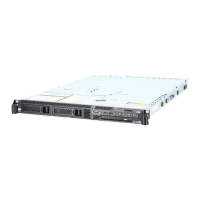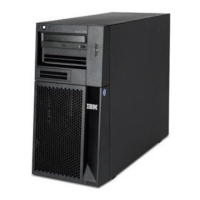Yes No
↓ Perform the following:
a. Change the value to 1 by entering CHGSYSVAL QRMTIPL (the
Change System Value command) on the command line.
b. Power off the system by entering PWRDWNSYS *IMMED (the
Power Down System Immediate command) on the command line.
c. Select Normal mode on the control panel.
d. Verify that an IPL from a remote location completes successfully by
going to step 8 of this procedure.
14. Start the communications verification function and run a cable wrap test on
the suspected cable by doing the following:
a. Enter VFYCMN (the Verify Communications command) on the command
line to show the communications verification display.
Note: For more information on VFYCMN (the Verify Communications
command), see “Verification Procedures” in the iSeries Service
Functions information.
b. On the next display, enter the line description name for the
communications line that has the remote power-on cable attached.
c. Select the Cable test option from the display that shows a list of tests that
can be performed on a communications line.
d. Follow all instructions (such as run problem analysis or attach the wrap
connector).
Did you find the communications problem using the above procedure?
No Yes
↓ Perform the following:
a. Exchange the failing item indicated (see “Chapter 4. Removal and
Installation Procedures” on page 617).
b. Verify that an IPL from a remote location completes successfully by
going to step 8 of this procedure.
15. Find an entry in the Service Action Log that matches the time, SRC, and/or
resource that compares to the reported problem.
a. On the command line, enter
STRSST
(the Start System Service Tools) command.
If you cannot get to SST, select DST (see “Accessing Dedicated Service
Tools” in the iSeries Service Functions ).
Display System Value
System: S0000000
System value.........: QRMTIPL
Description .........: Remote power on and IPL
Value ............: 0=Notallowed
1 = Allowed
Figure 5. Example of Remote Power-on Configuration Display for QRMTIPL
IPL Problems
Chapter 1. Starting Problem Analysis 29
